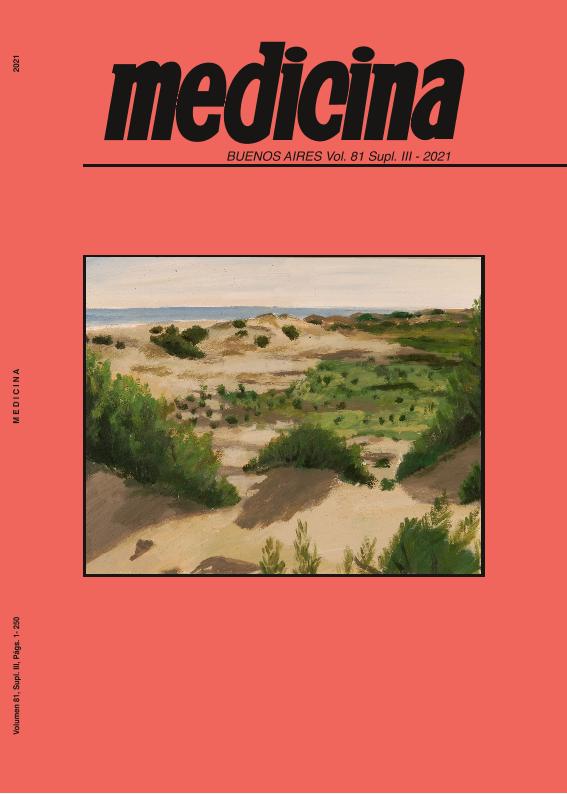Evento
Airway inflammation in a Salsola kali pollen induced murine model of allergy
Galvez, Marcelo Javier; Giorgi, Gisela ; Lencinas, Ileana Beatriz; Martínez, Adriana Beatriz; Murray, María Gabriela
; Lencinas, Ileana Beatriz; Martínez, Adriana Beatriz; Murray, María Gabriela ; Prat, María Inés
; Prat, María Inés
 ; Lencinas, Ileana Beatriz; Martínez, Adriana Beatriz; Murray, María Gabriela
; Lencinas, Ileana Beatriz; Martínez, Adriana Beatriz; Murray, María Gabriela ; Prat, María Inés
; Prat, María Inés
Colaboradores:
Curino, Alejandro Carlos

Tipo del evento:
Reunión
Nombre del evento:
LXVI Reunión Anual de la Sociedad Argentina de Investigación Clínica; LXIX Reunión Anual de la Sociedad Argentina de Inmunología; LIII Reunión Anual de la Asociación Argentina de Farmacología Experimental y XI Reunión Anual de la Asociación Argentina de Nanomedicinas
Fecha del evento:
17/11/2021
Institución Organizadora:
Sociedad Argentina de Investigación Clínica;
Sociedad Argentina de Inmunología;
Asociación Argentina de Farmacología Experimental;
Asociación Argentina de Nanomedicinas;
Título de la revista:
Medicina
Editorial:
Fundación Revista Medicina
e-ISSN:
1669-9106
Idioma:
Español
Clasificación temática:
Resumen
Allergic rhinoconjunctivitis and asthma are diseases with an increasing worldwide prevalence. In our region, common weeds, e.g. Salsola kali, are one of the major causes of pollinosis. Murine models are useful for studying the mechanism of allergic disease. Regarding the model antigen, the majority of studies have been performed using ovalbumin. The aim of this work were to develop an experimental animal model of allergy based on relevant human aeroallergens, such as S. kali pollen, and to define the immunological and cellular airway features of the allergic response. BALB/c mice (n = 5/group) were administrated with PBS or S. kali pollen extract through i.p. route and later challenged by nasal instillation of PBS or S. kali pollen respectively for 3 consecutive days. S. kali-specific IgE were measured by ELISA. After sacrifice, the noses and lungs were fixed and paraffin embedded for histological analysis (H&E, toluidine blue and periodic acid-Schiff). After nasal challenge with S. kali pollen, sensitized mice manifested early-phase (sneezing) and late-phase (eosinophilic and basophilic accumulation) response compared with the control group. Frequency of sneezing in sensitized mice were higher than the control throughout the challenge phase (p < 0,01). The histology showed goblet cell hyperplasia and eosinophil infiltration in nasal lateral mucosa (135 ± 58 in sensitized mice vs. 8 ± 1 in control group) and septum (52 ± 36 vs. 1 ± 1 respectively). Also, sensitization induced moderate to severe inflammatory infiltration in lungs. S. kali-specific IgE value was not increased in all sensitized mice. Our results confirm upper airway inflammation correlated with lower airway inflammation in response to allergen exposure. The symptoms and histology observed encourages us to think about the establishment of an alternative murine model based on relevant human allergens that allow to understanding the disease and exploring therapeutic approaches.
Palabras clave:
rhinoconjuntivitis
,
asthma
,
pollen
,
ELISA
Archivos asociados
Licencia
Identificadores
Colecciones
Eventos(INBIOSUR)
Eventos de INSTITUTO DE CIENCIAS BIOLOGICAS Y BIOMEDICAS DEL SUR
Eventos de INSTITUTO DE CIENCIAS BIOLOGICAS Y BIOMEDICAS DEL SUR
Citación
Airway inflammation in a Salsola kali pollen induced murine model of allergy; LXVI Reunión Anual de la Sociedad Argentina de Investigación Clínica; LXIX Reunión Anual de la Sociedad Argentina de Inmunología; LIII Reunión Anual de la Asociación Argentina de Farmacología Experimental y XI Reunión Anual de la Asociación Argentina de Nanomedicinas; Argentina; 2021; 154-154
Compartir



